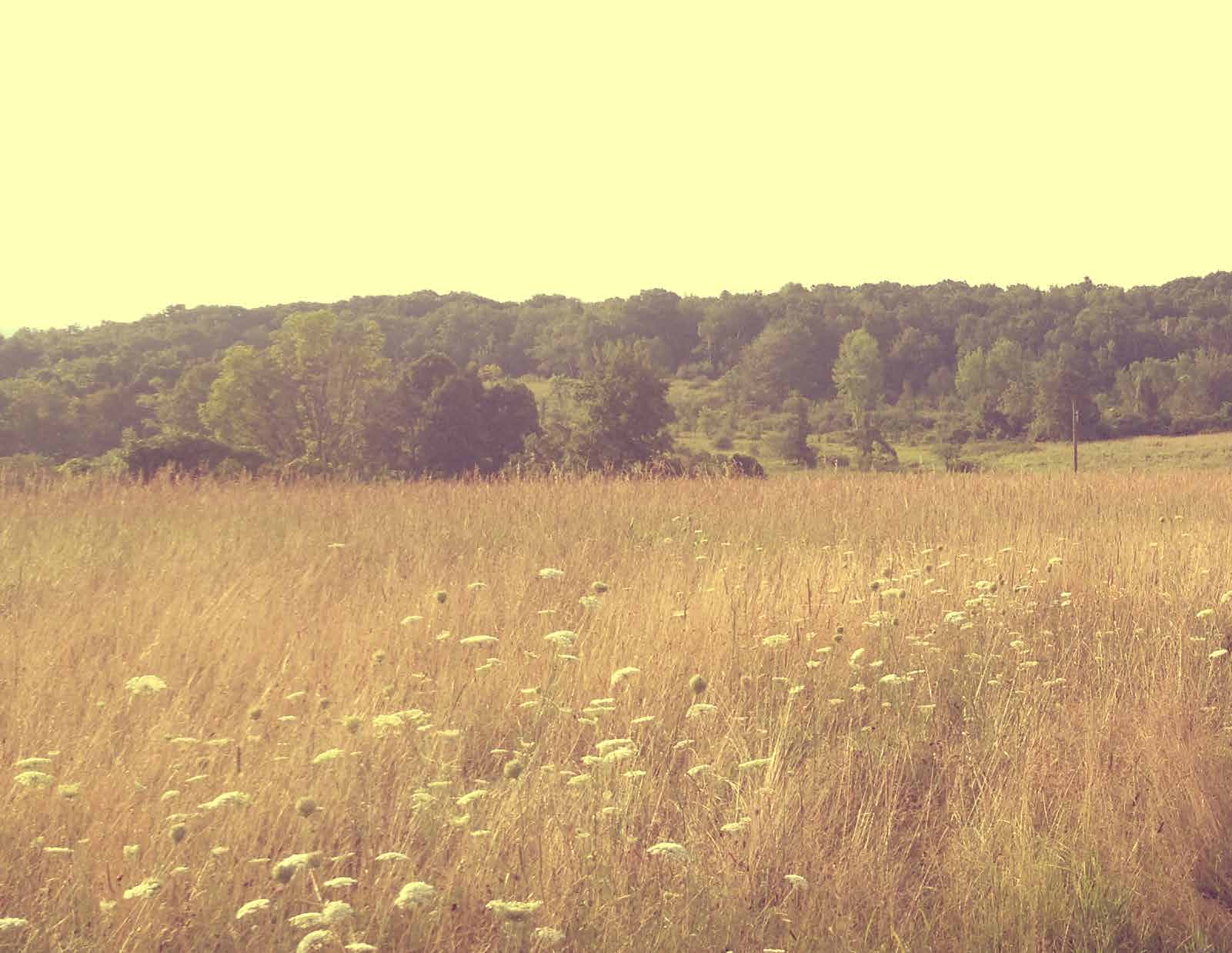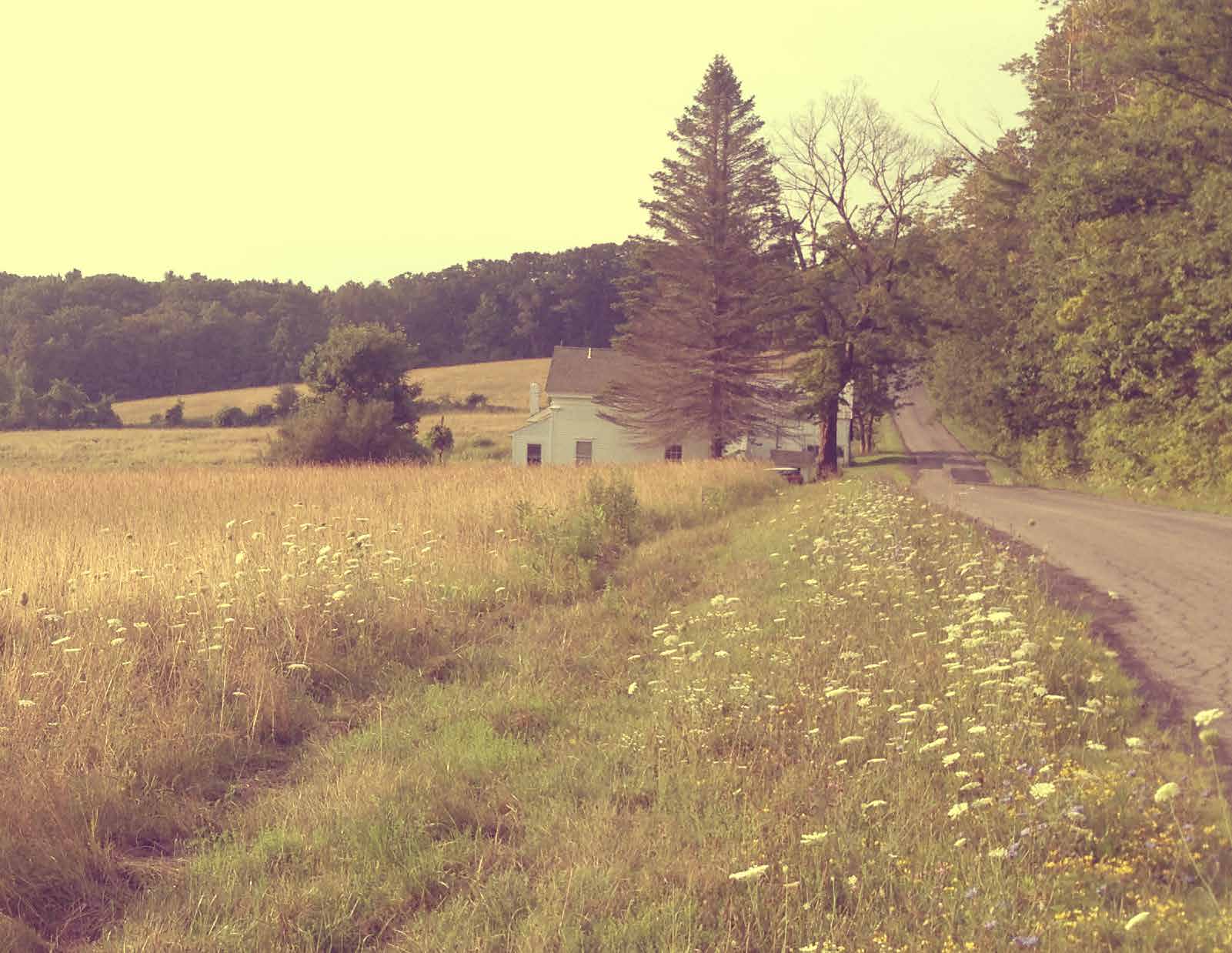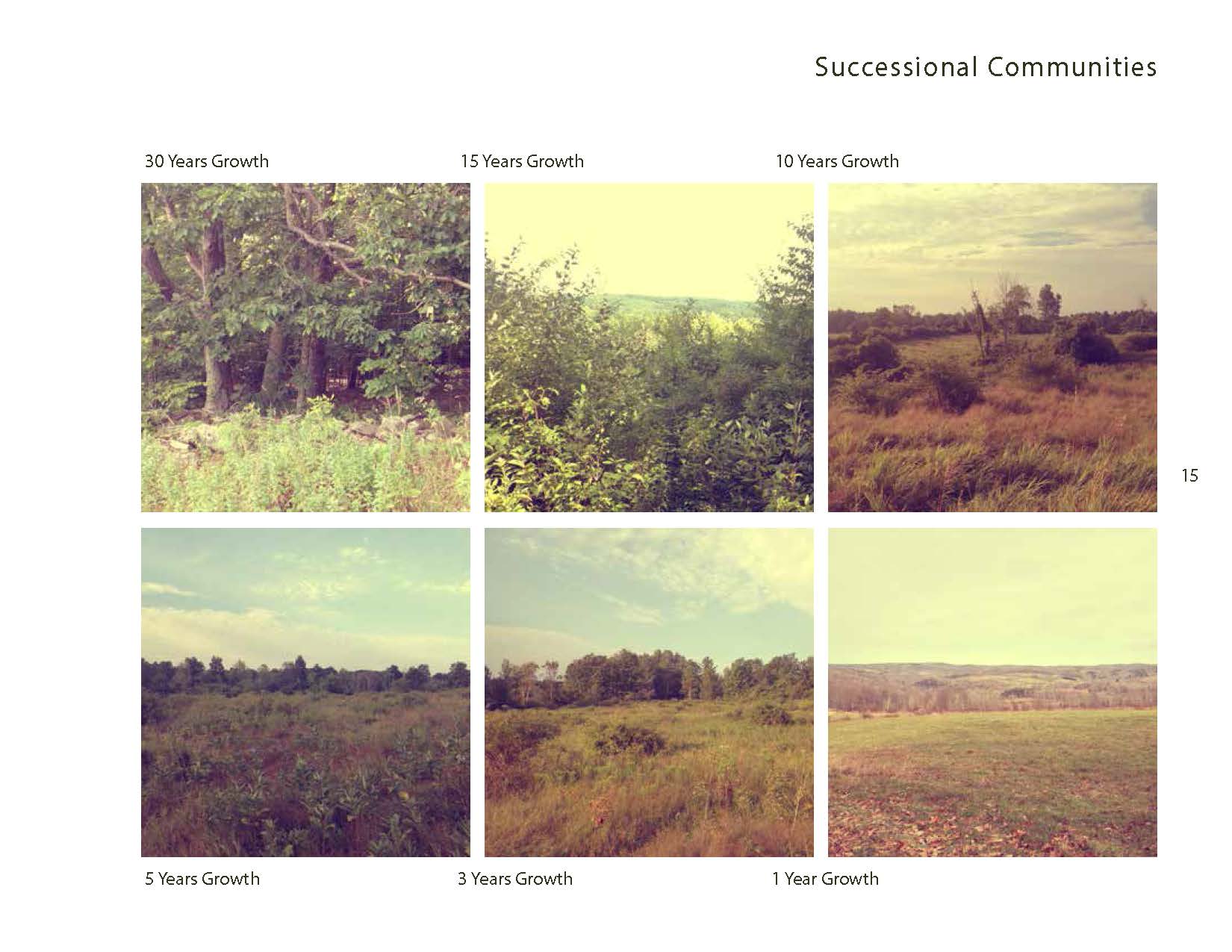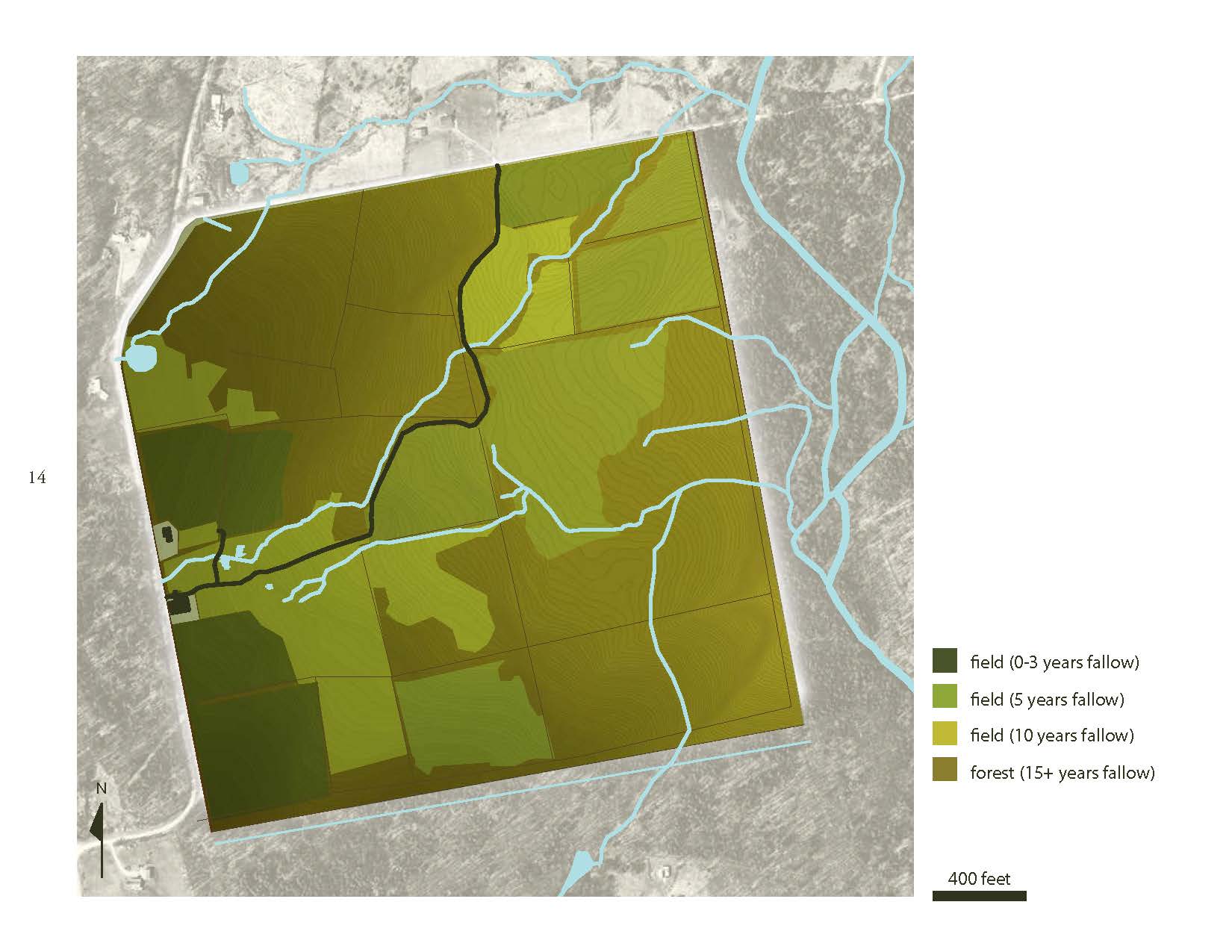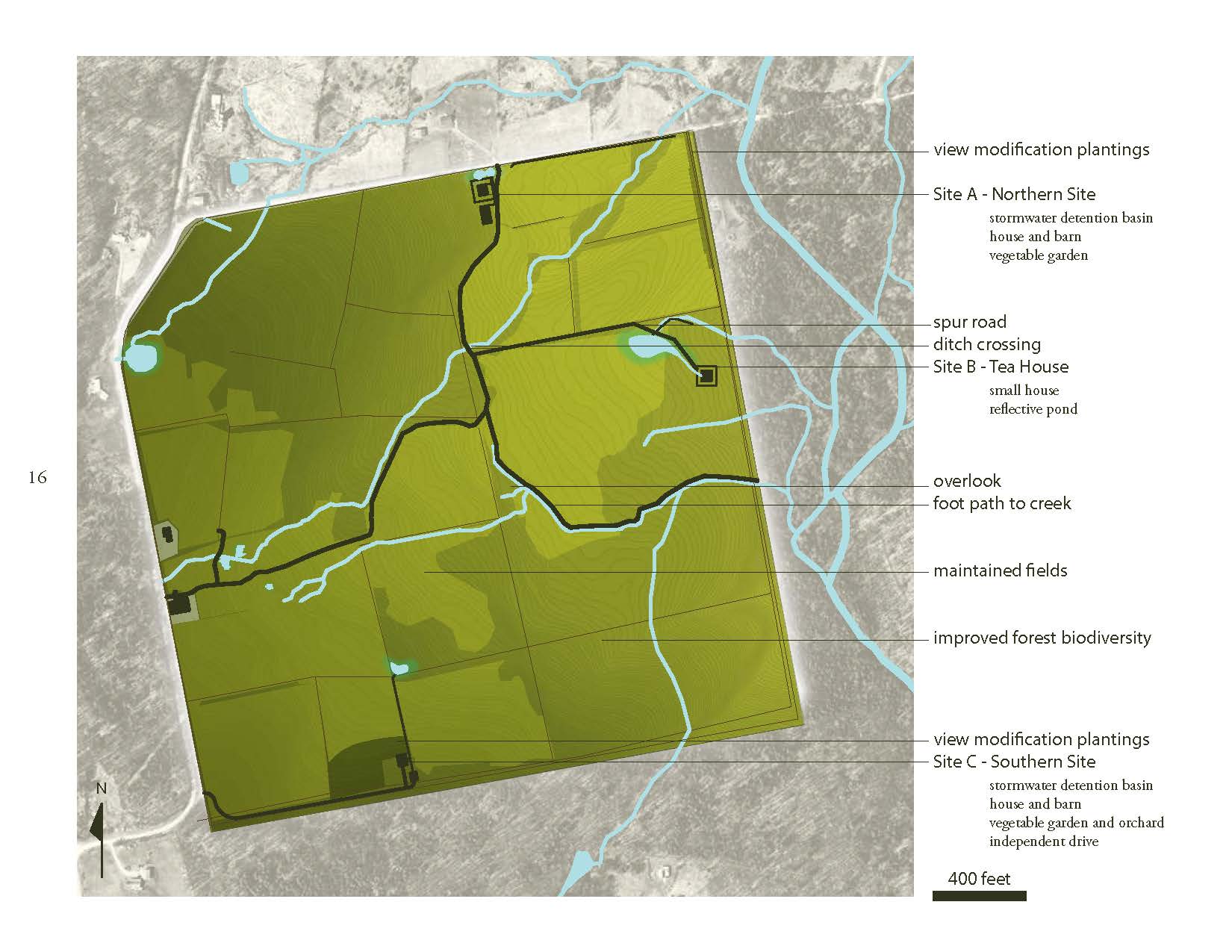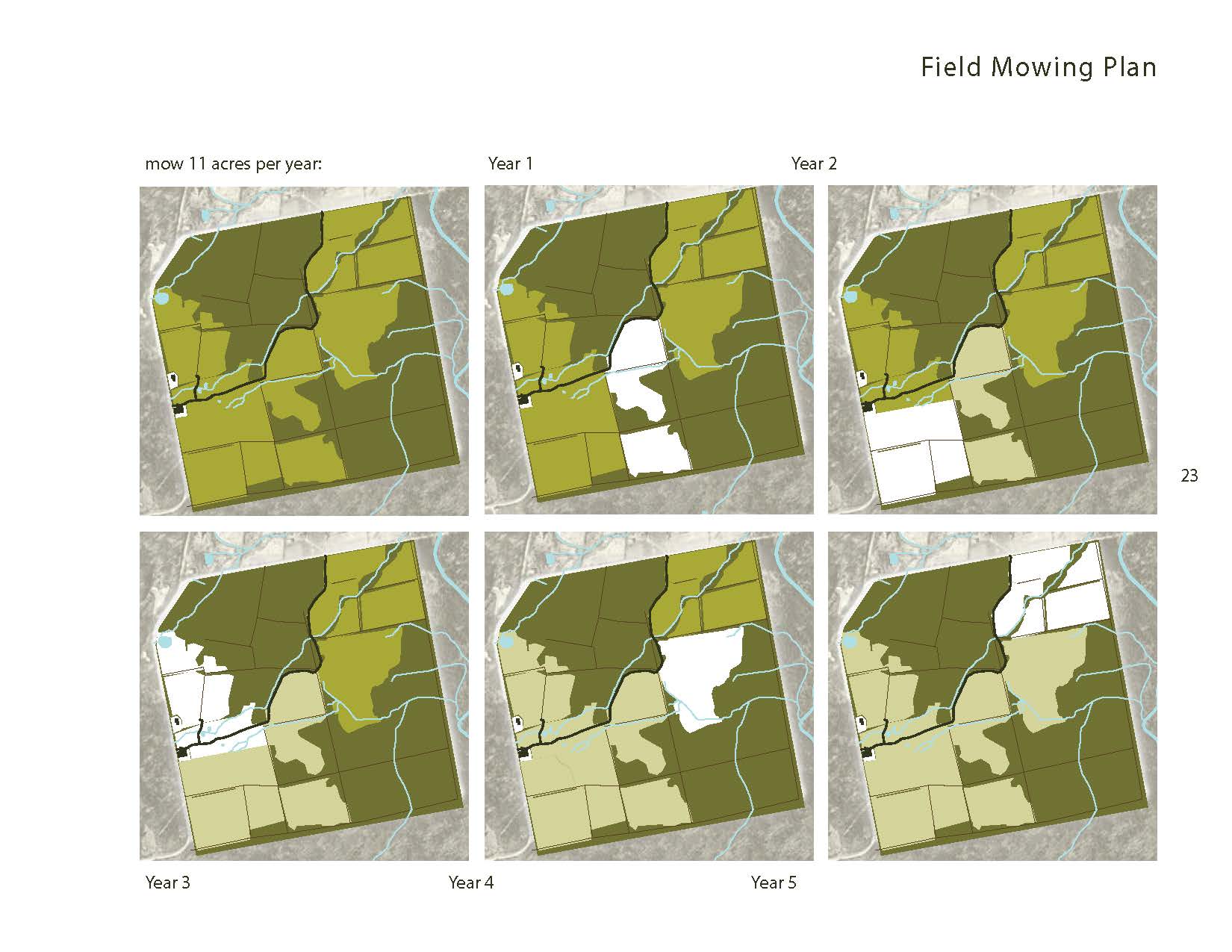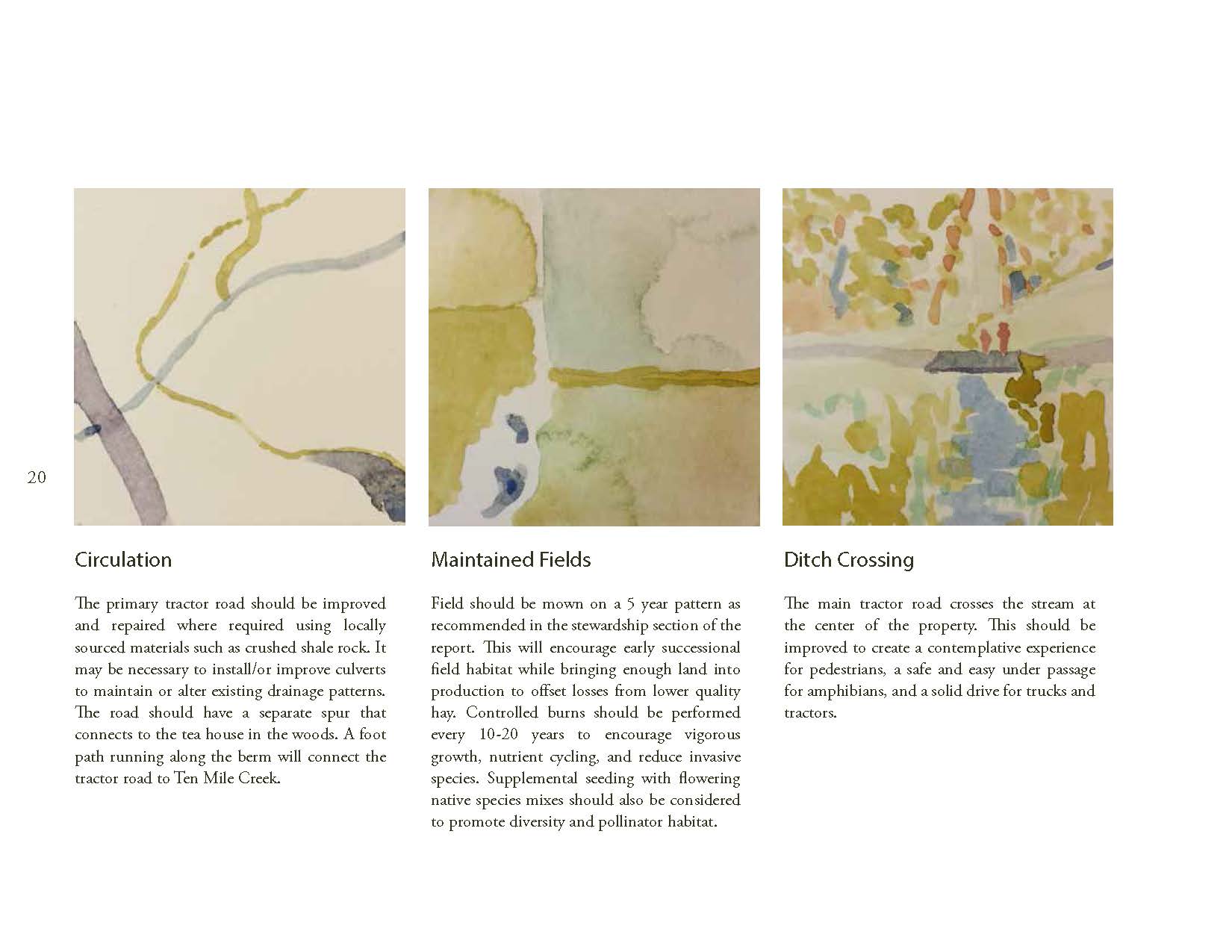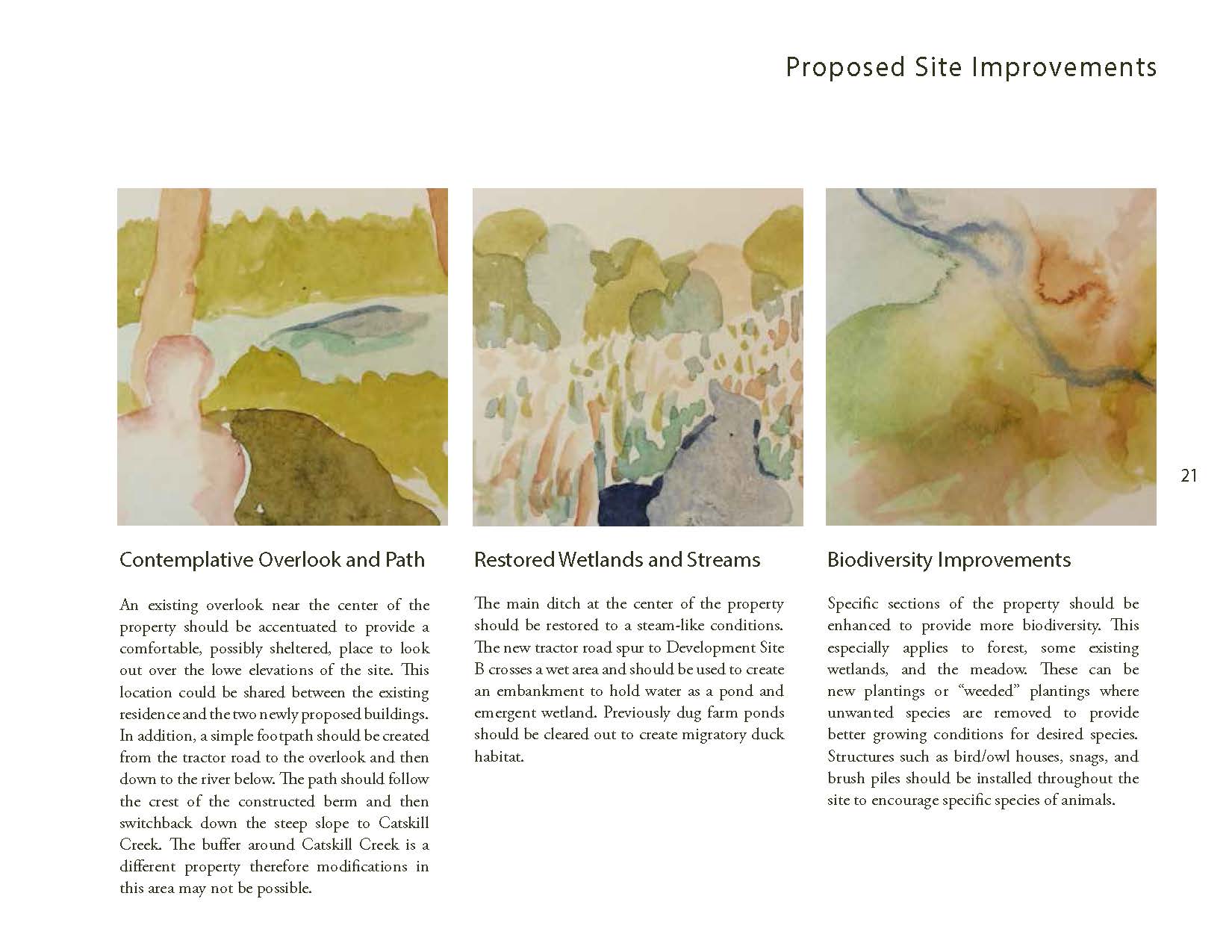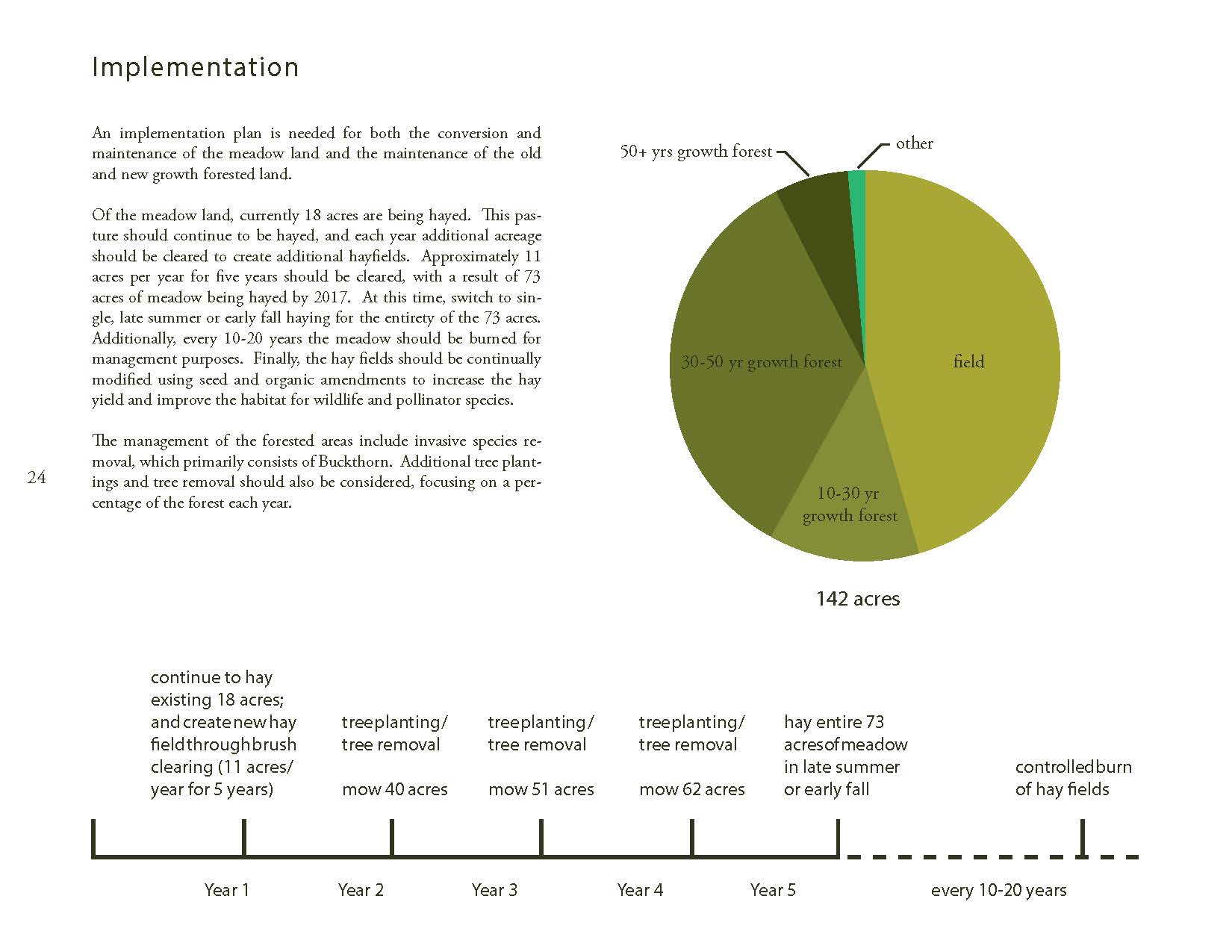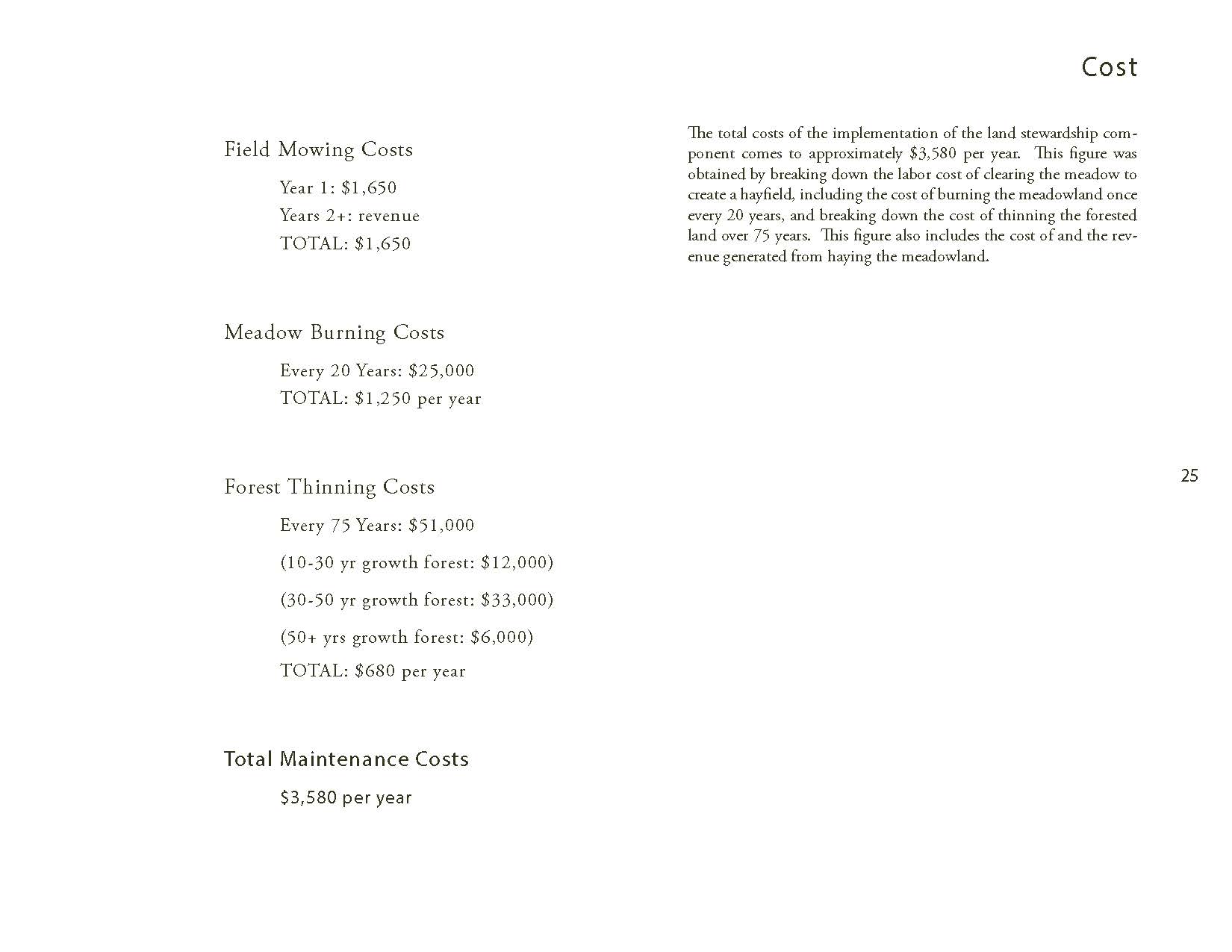The Bee Farm, Catskill Creek Watershed, NY
One Nature was hired to develop an Agroecological Master Plan for the Bee Farm, a beautiful 160-acre property of pasture and woodland in New York’s upper Hudson River Valley. The current owner has been using the property for honey and hay production, and would like to develop an ecological reserve that allows for bird watching, hiking, and cross-country skiing. After repeated site visits and in-depth analysis, a comprehensive master plan was completed. This master plan proposed an ecologically sound maintenance program for existing field habitats: a strategy for managing forest areas, recommendations for the maintenance and definition of pathways, and the best locations for future building projects. The plan also included ecological restoration initiatives that would enhance views, increase biodiversity, encourage pollinators, and promote agriculture.
Open land at the Bee Farm consists of about 20 acres of hay field and less than 60 acres of wild field. One Nature recommended gradually converting the wild fields into hay fields over a five-year period to maximize future agriculturally productive land while creating critical grassland habitat. Controlled burns should be conducted every 10 to 20 years, if possible, to encourage vigorous growth and nutrient cycling, and reduce invasive species. Supplemental seeding with a mixture of flowering native species was advised to help promote diversity and pollinator habitat.
Ecological restoration of forested, meadow, and wetland areas is an important component of the master plan. One Nature recommended select removal of unwanted plant and tree species and new plantings to provide better growing conditions for native species. Structures such as bird and owl houses, snags, and brush piles should be installed throughout the site to encourage native wildlife habitation. Building buffer zones around each water feature on the property, including ponds, vernal pools, and seasonal drainage basins, will protect these habitats.
One Nature’s holistic approach helped our client to create an agroecological balance between wild and cultivated habitats on a broad scale.


